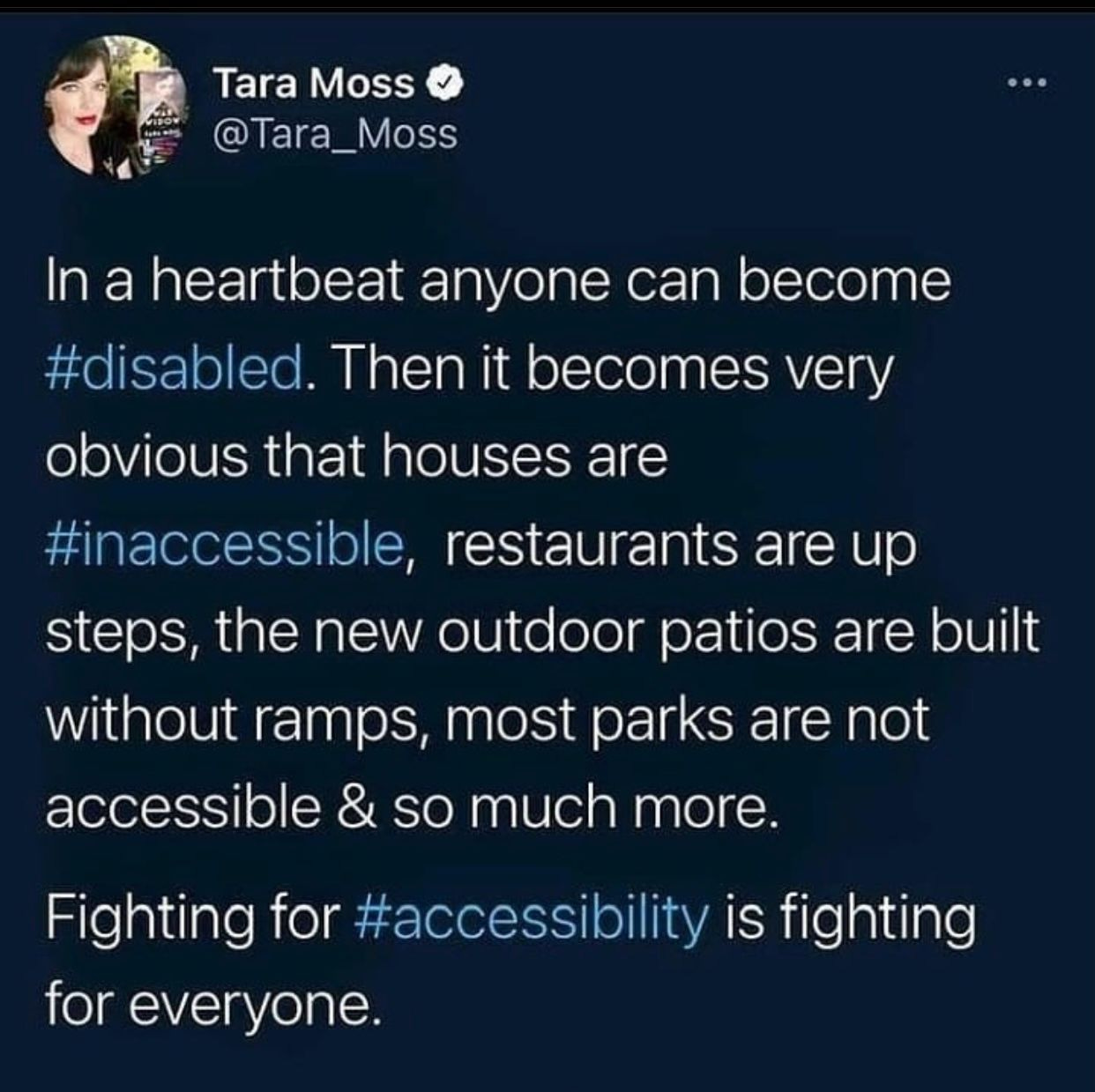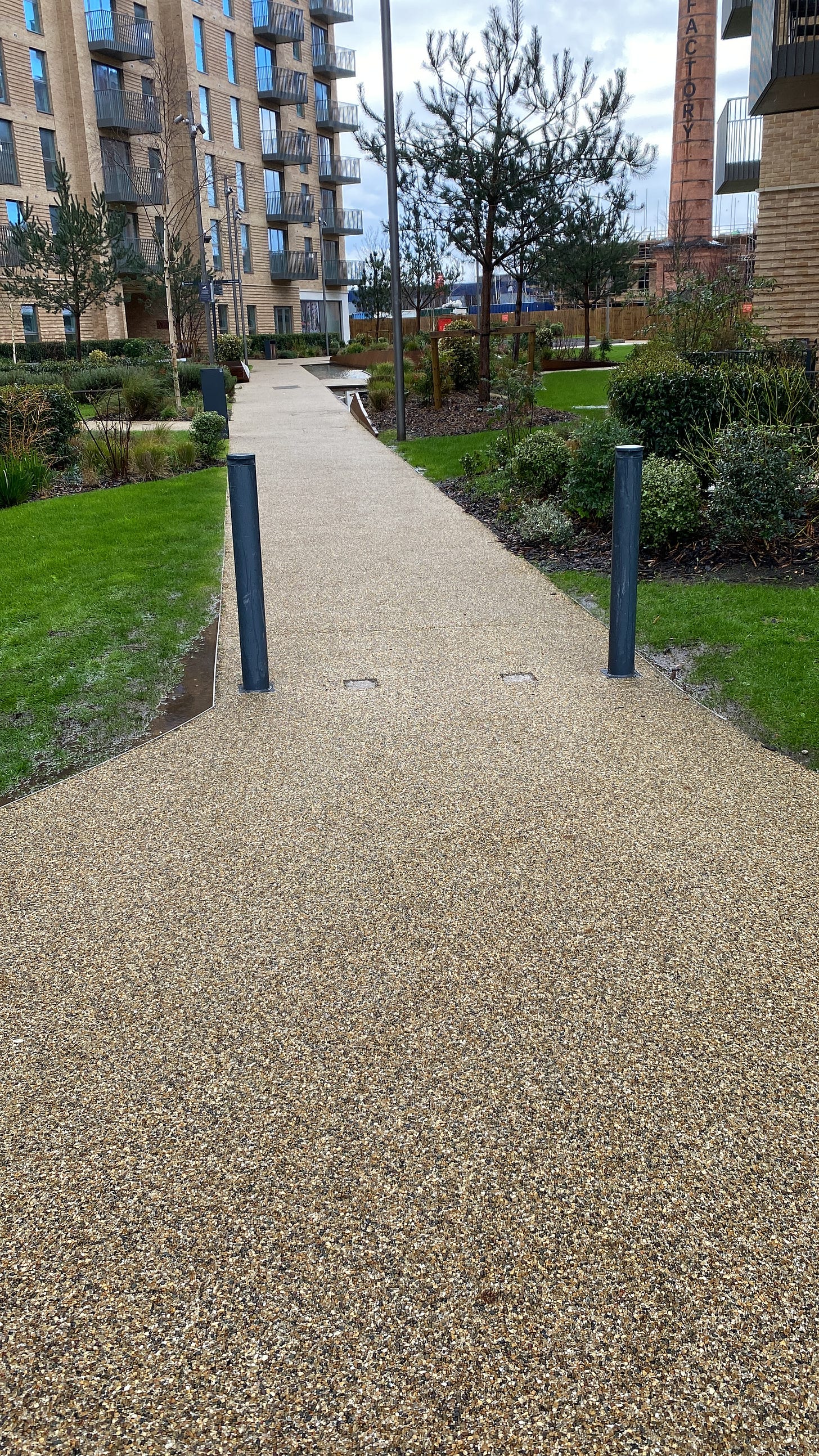Soul Wisdom is a weekly newsletter. Please feel free to share parts of this letter that connect with you, or send to someone you love. A special shout out to all the new subscribers who joined since the last newsletter. Thank you for valuing my work when there are so many things that can take your attention online. I appreciate you. It means everything. 🖤
Seeing The World From A Wheelchair
“It is not our differences that divide us. It is our inability to recognize, accept, and celebrate those differences.” - Audre Lorde
Back in 2023, when I moved into a new apartment, I walked past the above bollards outside my building every day without a second thought. They were just part of the landscape—something I never considered a problem. That all changed when my partner
came to visit.It wasn’t until I started dating her that I began to see the world from a completely different perspective. She’s a wheelchair user, and I’m not. The bollards outside my building weren’t wide enough for her wheelchair to pass through, forcing her to maneuver onto the grass and get her wheels dirty. That’s not just inconvenient—it’s inaccessible. Even parents with prams faced the same issue.
I also noticed that to enter the building you need a key fob and have to pull open the heavy door manually. For a wheelchair user or someone with limited strength due to illness, this can be a significant struggle. I had never seen these things as issues because they didn’t affect me.
And that’s exactly the point.
When something doesn’t impact our daily lives, it’s easy to be ignorant of how it might affect others.
Diversity and Inclusion (D&I) isn’t just a checkbox—it’s about truly understanding how life is for other people. The way I live isn’t how everyone else lives. It wasn’t until I was navigating life with Hannah that my eyes were truly opened to the inaccessibility all around me because I was now experiencing them firsthand.
So, I took action.
I found out who the Estate Manager was and emailed her about the bollards. To my surprise, she was very receptive. She put me in touch with the Project Director and he coordinated with his team on the ground to make the necessary changes. It took a few months of chasing but they acknowledged the situation, apologised, and took action swiftly.
This is how the bollards looked after they were readjusted:
This experience taught me two powerful lessons:
Using my voice can create change.
Not everyone lives as I do, and it’s important to take the time to understand the struggles others face with things I take for granted.
If you’re designing a product, service, or space, accessibility cannot be an afterthought.
It’s not about creating something first and then scrambling to make it accessible later. By then, you’ll likely find it doesn’t serve everyone’s needs—and retrofitting for accessibility becomes expensive and impractical. More often than not, those changes don’t even happen because it’s deemed too costly.
The solution? Start with accessibility in mind.
From the very beginning—during the discovery and planning phases—consult with people in the disability community. Their insights are invaluable for creating truly inclusive and accessible designs that work for everyone.
No matter how qualified your project team is, if it’s made up of only non-disabled individuals, they won’t fully understand the challenges disabled people face.
I’ve had the privilege of learning this firsthand from Hannah. She’s opened my eyes to the everyday obstacles I overlooked and helped me understand how crucial accessibility really is.
Here’s a few examples:
Looking for a dropped curb on a footpath for her wheelchair to cross the road safely
Booking a ramp to get on and off trains (unfortunately often times even if the help is booked in advance people forget and she can be left on the train on her own with no way of getting off because there is a gap between the train and the platform)
Checking to see if a restaurant has a ramp for access
Ensuring there’s an accessible toilet on the ground floor wherever we go
Confirming lifts are functional at train stations and other places with stairs
The reason I’m sharing all of this is because everyone should be taught about accessibility. I’m surprised we’re not taught about it in school in some way.
It is society’s lack of ability to adjust for the realities of disability that make life hard for disabled people.
Together we need to make this world more inclusive for everyone. Inclusivity isn’t about treating everyone the same; it’s about recognizing our differences and catering to them. Only by pointing out areas of improvements can things get better.
With love,
V
If my words have helped you in some way, I humbly invite you to consider upgrading your subscription to paid as a way to show your support. It would mean the world to me as I pour my soul into each piece I share.
Working with me
If you’re wanting to do any of the following then reach out to me:
live with more courage,
discover and speak your truth confidently,
understand your emotions and your patterns,
set boundaries with family members and others,
deepen your relationship to yourself and your partner
A few words from a past client and dear friend:
“Vipul’s combination of emotional intelligence, compassion, and clarity makes him an exceptional coach, speaker and group facilitator. His ability to connect with others on both a personal and professional level is unmatched. If you’re looking for someone to create impact and truly leave people better than they found them, Vipul is that person.”Patrice Washington








Love you and for you open and wonderful heart and how you advocate.